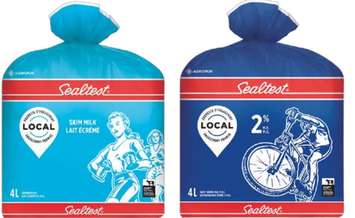According to a new study, billions of litres of milk have been wasted by Canadian dairy farmers over the last decade. Despite efforts to regulate the supply, a study co-authored by Dr. Sylvain Charlebois from Dalhousie University’s Agri-Food Analytics Lab reveals that over 6 billion litres of milk, worth approximately $6.7 billion, were discarded between 2012 and 2021. Estimates suggest this figure could be even higher, nearing 10 billion litres.
Charlebois has been vocal about the inefficiencies in Canada’s Dairy Supply Management System (DSMS). In an interview with CKNXNewsToday.ca, he explained how this waste is driven by an outdated quota system, which was originally designed to stabilize the market. Charlebois claims it has since become a significant environmental and economic liability.
“This system, which was meant to prevent milk from being wasted, is actually doing the opposite. In the last 10 years, the amount of milk wasted is enough to have supplied 11 percent of the Canadian population. The environmental impact of this is staggering,” he said.
The study, soon to be published in the Ecological Economics journal, details how the Canadian dairy system incentivizes overproduction. Farmers, eager to meet their quotas and avoid penalties, often produce more milk than is needed. As a result, massive quantities of milk are dumped annually, contributing to environmental degradation and resource misuse. The ecological toll includes the use of nearly 2,000 square kilometers of arable land and over 1.9 billion cubic meters of water. Additionally, the emissions tied to this wasted milk equal 8.4 million tonnes of CO2—comparable to the emissions from 330,000 cars on the road.
Canada’s DSMS was created to match dairy production with consumer demand, providing farmers with stable income and consumers with a steady supply of milk. Yet the study suggests that the rigid quota system has led to inefficiencies.
“Farmers are encouraged to produce as much as possible because they’re scared of falling short, but there’s no strategy for what happens when they produce too much. That milk often ends up being dumped, and the system continues without addressing this fundamental issue,” Charlebois said.
This excess production occurs even as many Canadians struggle with rising dairy prices and increasing reliance on food banks. Charlebois sees this as a moral issue as well as an economic one.
“The most frustrating part is that there’s no transparency. The Canadian Dairy Commission (CDC) is supposed to manage this system, but they don’t collect or share enough data on how much milk is actually being wasted,” he said.
The findings of Charlebois’ study have prompted calls for significant changes to the DSMS. Key recommendations include making on-farm milk waste illegal and redesigning the system to allow surplus milk to be converted into powdered form and stored, much like Canada’s federal butter reserve.
In addition, Charlebois advocates for greater transparency and accountability.
“Just as the U.S. documents milk waste, we should do the same in Canada. That would give us a clearer picture of what’s happening and make it easier to address the issue,” he said.
The CDC echoed these sentiments, pointing out that 99 percent of the 9.6 billion litres of milk produced annually is processed and marketed. However, critics like Charlebois say that without better data and stricter penalties for overproduction, the system will continue to incentivize waste. He also believes reform is inevitable.
“If we don’t act soon, we’ll continue to see milk go to waste, resources misused, and prices remain high," he said. "This system needs to work for everyone, not just a select few.”






